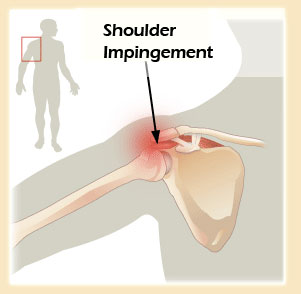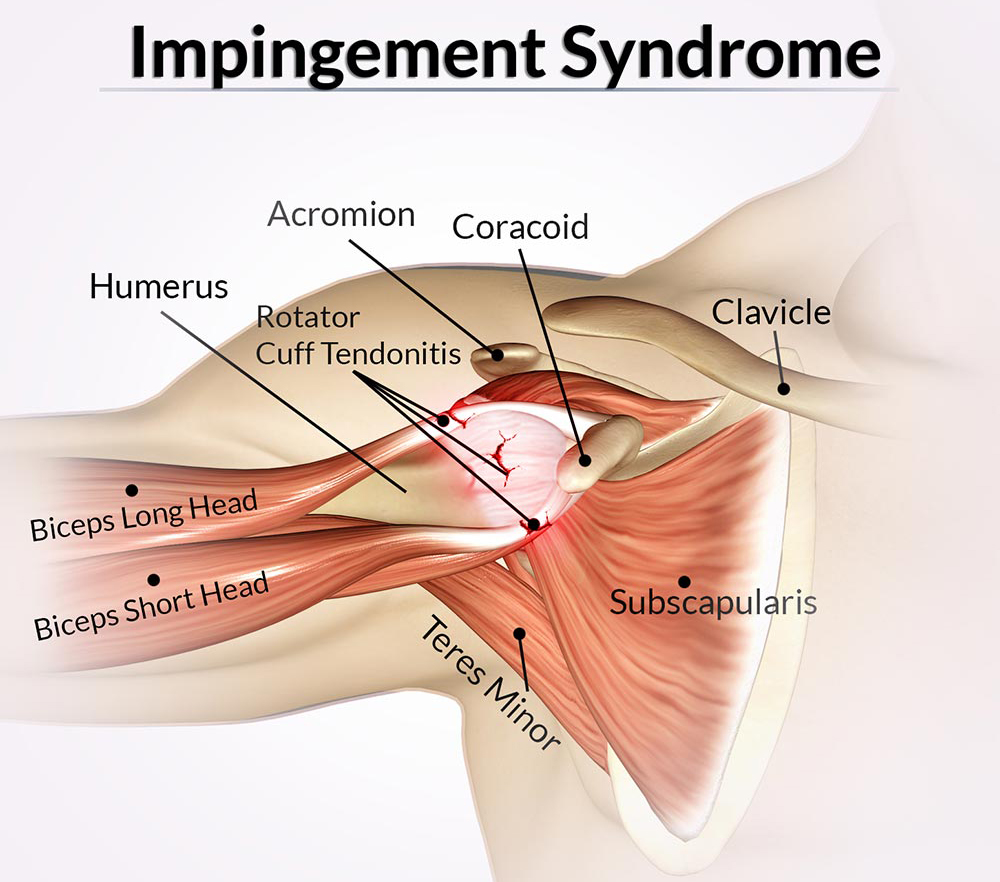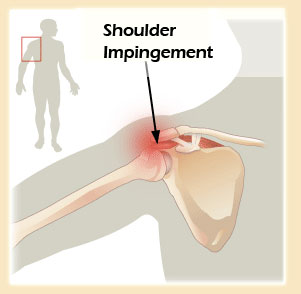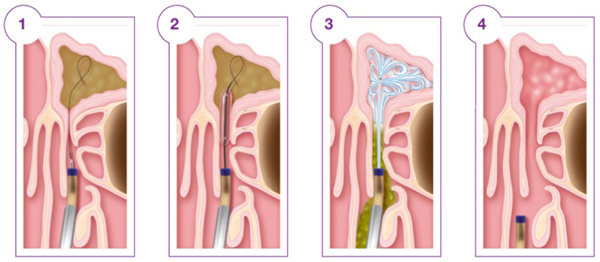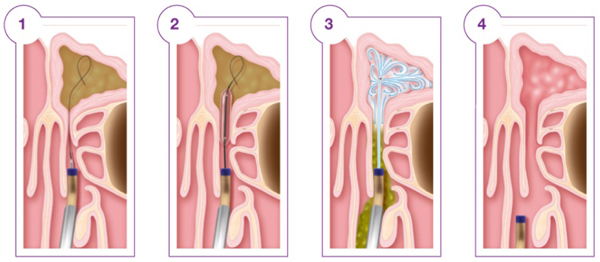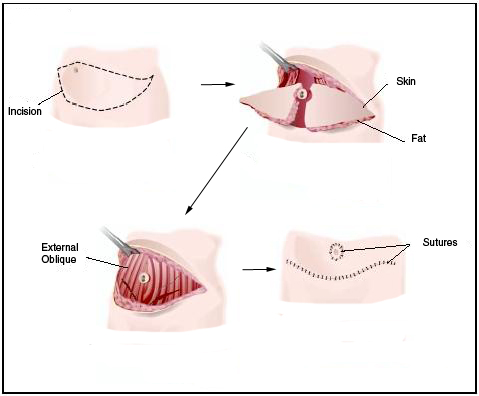Abdominoplasty or “tummy tuck” is a cosmetic surgery procedure used to make the abdomen thinner and more firm. The surgery involves the removal of excess skin and fat from the middle and lower abdomen in order to tighten the muscle and fascia of the abdominal wall. This type of surgery is usually sought by patients with loose or sagging tissues after pregnancy or major weight loss.
Even individuals of otherwise normal body weight and proportion can develop an abdomen that protrudes or is loose and sagging. The most common causes of this include:
- Aging
- Heredity
- Pregnancy
- Prior surgery
- Significant fluctuations in weight
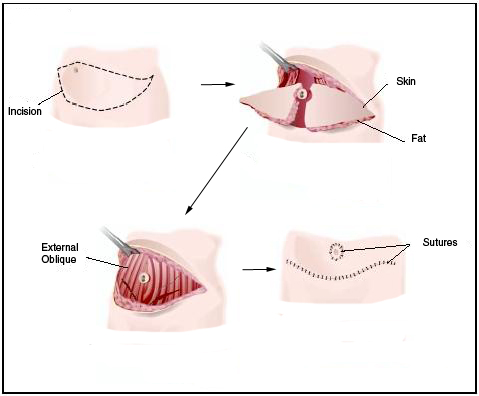
Procedures
Abdominoplasty operations vary in scope and are frequently subdivided into categories. Depending on the extent of the surgery, a complete abdominoplasty can take from 1 to 5 hours. A partial abdominoplasty (mini-tuck abdominoplasty) can be completed between 1 to 2 hours.
Reconstruction of the umbilicus (belly button) following an abdominoplasty surgery. The original umbilicus is sutured into a new hole created by the surgeon.
Complete abdominoplasty
In general, a complete (or full) abdominoplasty follows these steps:
- An incision is made from hip to hip just above the pubic area.
- Another incision is made to free the navel from the surrounding skin.
- The skin is detached from the abdominal wall to reveal the muscles and fascia to be tightened. The muscle fascia wall is tightened with sutures.
- Liposuction is often used to refine the transition zones of the abdominal sculpture.
- A dressing and sometimes a compression garment are applied and any excess fluid from the site is drained.
Full abdominoplasty consisting of musculofascial plication abdominal dermal lipectomy, suction-assisted lipectomy of hips.
Partial abdominoplasty
A partial (or mini) abdominoplasty proceeds as follows:
- A smaller incision is made.
- The skin and fat of the lower abdomen are detached in a more limited fashion from the muscle fascia. The skin is stretched down and excess skin removed.
- Sometimes the belly button stalk is divided from the muscle below and the belly button slid down lower on the abdominal wall.
- Sometimes a portion of the abdominal muscle fascia wall is tightened.
- Liposuction is often used to contour the transition zone.
- The flap is stitched back into place.
The completely sutured area where nearly 100 square centimeters of skin was removed during a combination abdominoplasty and liposuction procedure (also known as a “lipo-tuck”). Note the “neo”-umbilicus (belly button) that was reattached to a newly created hole.
Extended abdominoplasty
An extended abdominoplasty is a complete abdominoplasty plus a lateral thigh lift. The resulting scar runs from the posterior axillary line (when placing your open hands on your hips, the thumbs lie along the posterior axillary line.) The operation does all of the abdominal contouring of a complete abdominoplasty and allows further improvement of the flank (waist), as well as smoothing the contour of the upper lateral thigh.
High lateral tension tummy tuck
This is an advanced technique that takes a little more than four and half hours to perform. Conventional abdominoplasty tightens muscles in a vertical line. In this new method, known as high lateral tension abdominoplasty, in addition to vertical-line tightening, muscles are tightened horizontally. The final result with this technique is a dramatically flat abdomen with significantly better-defined waistline.
Floating Abdominoplasty or FAB Technique
This new technique, also known as an extended mini abdominoplasty, allows for tightening and shaping through a smaller incision that isn’t placed around the belly button. Through this smaller incision, excess skin is removed and the belly button is temporarily detached, floating above the muscles during this process. The muscles are tightened and reshaped from sternum to pubic area. The skin is then tightened and the belly button is reattached, or moved down one or two cm if desired. Liposuction may also be performed to achieve desirable results.
Circumferential abdominoplasty
A circumferential abdominoplasty is an extended abdominoplasty plus a buttock lift. The resulting scar runs all the way around the body, and the operation is also called a Belt Lipectomy or Body Lift. This operation is most appropriate for patients who have undergone massive weight loss.
Combination procedures
An abdominoplasty is a component of a lower body lift and can be combined with liposuction contouring, breast reduction, breast lift, or occasionally hysterectomy, depending on the reason for the hysterectomy. A popular name for breast enhancement procedures performed in conjunction with an abdominoplasty is a “mommy makeover”. Recent literature in MEDLINE also has noted implementation of barbed suture in these procedures.
Recovery
- Depends on the problem to be treated, surgical technique(s), and other factors. Can take one to four weeks and patients are advised to take at least a portion of this recovery time off from work.
- Heavy activity especially is best avoided during this time.
- Initially there may be bruising and discomfort.
- A supportive abdominal binder or compression garment can minimize swelling / bruising, and support the repaired tissues. This compression garment is also effective in helping the skin in the treated area conform to its new shape.
- Patients are advised to avoid all forms of nicotine for a month or longer prior to surgery and also during the recovery period.
- Full recovery takes 3–6 months, with further fading of scars thereafter. Scars may appear red and prominent at first, but with proper care, they heal into a thin, silvery line.
Who Are the Best Candidates For a Tummy Tuck?
A tummy tuck is suitable for men and women who are in good health.
Women who have had several pregnancies may find the procedure useful for tightening their abdominal muscles and reducing skin.
A tummy tuck is also an option for men or women who were once obese and still have excess fat deposits or loose skin around the belly.
Dr. Rohit Kumar
Specialist General Surgeon
Laparoscopic Surgeon
